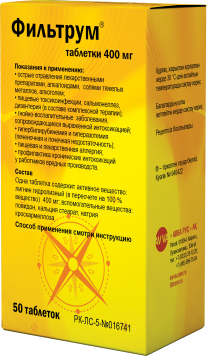Vomiting in a child
- The mechanism of occurrence.
- Regurgitation in a child.
- Vomiting in newborns.
- Causes of vomiting in children of any age.
- The most dangerous causes of vomiting. Clinical features.
- What is important for parents to know.

Vomiting is a suddenly releasing stomach contents through the mouth or (much less often) nose. It happens at any age, but more often - in children of 1 year old, when the digestive system still develops. Vomiting in a child, as a rule, is a symptom of the disease. The exception is natural regurgitation in newborns.
The mechanism of occurrence
- The abdominal diaphragm is lowering.
- The vocal cords (folds) are getting closed blocking the vocal chink. This provides protection of the respiratory tract.
- The stomach pyloric sphincter (ring muscle closest in its terminal section) is sharply contracting, and the lower esophageal sphincter is relaxing.
- Muscular fibers of the abdomen and diaphragm are getting strained, as a result, the stomach contents is leading out through the oral cavity or nose outside.
Regulating process is carried out by the emetic center localized in the medulla oblongata. Thus, vomiting is a reflex act the person can not consciously influence.
Vomiting in children can feature an organic nature (due to diseases) and be functional, in most cases associated with the psychic sphere. The pathology accompanied by vomiting is congenital or acquired. If congenital anomalies reveal themselves during the first hours (or days) of the child's life, the acquired diseases - at any age.
Regurgitation in children
 Regurgitation is a kind of vomiting observed only in children of 1 year old. In contrast to classical vomiting, this process is provided solely by the abdominal press muscles. Due to incomplete maturity of the sphincters of the upper sections of the digestive tract, the gastric contents go out freely with uncontrolled increase in abdominal pressure (with contracting muscle).
Regurgitation is a kind of vomiting observed only in children of 1 year old. In contrast to classical vomiting, this process is provided solely by the abdominal press muscles. Due to incomplete maturity of the sphincters of the upper sections of the digestive tract, the gastric contents go out freely with uncontrolled increase in abdominal pressure (with contracting muscle).
This is a physiological process that ensures the release of the stomach from the air entering during feeding.
Main features:
- regurgitation happens after having meal once;
- a small amount of milk or water is regurgitated;
- the baby`s condition does not get worse.
If the emetic pangs continue in the baby for a long time, vomiting is repeated, bloody, of yellow or greenish color, the smell is changed, then this process should be considered as a pathology and contact the doctor as soon as possible.
Vomiting in newborns
It can be not only the manifested disease, but also arise when the rules of feeding and care are violated.
Diseases of the digestive system, one of the symptoms of which is vomiting:
- congenital anomalies: atresia of the esophagus unconnected with the stomach; pyloric stenosis, which is a persistent decreasing lumen output from the stomach, for example, due to inflaming and developing tumor;
- pilorospasm (disordered nervous regulation of contracting muscular stomach);
- diseases revealing themselves by flatulence (bloating and increased gas output) and constipation, most often they are pancreatic pathology and intestinal diseases.
The stool frequency and type in children is affected by the mother's nutrition during breastfeeding. A large number of fixing products (pears, immature bananas, strong tea, rice), as well as leading to increased gas production (whole milk, legumes) can cause the same changes in kid.
Key failing eating habits are overfeeding and ingesting large amount of air during feeding. It is important to ensure the baby grasping not only the nipple, but also the areola around. After feeding, hold the baby vertically, so that the gas formed in the stomach, came out in a natural way, i.e. regurgitated.
Causes of vomiting in children of any age
In addition to congenital anomalies, infants featuring vomiting got diseases of the digestive system and pathological processes not associated with this system. The same causes are possible in elder children.
Diseases of the gastrointestinal tract
 All the diseases of the gastrointestinal tract:
All the diseases of the gastrointestinal tract:
- infectious nature (acute gastroenteritis, lesions of the gastric mucosa and small intestine), gastritis, when only the stomach is affected, peptic ulcer;
- pancreatic pathology: pancreatitis (inflammation), neoplasms, especially featuring predominant head lesion;
- inflamed liver diseases (hepatitis) and tumors.
There are also chemical burns of the esophagus, stomach, intestines that release themselves when vinegar, essences, household chemicals enter stomach. In this case, saving child, recovery directly depends on the speed of beginning applying medications.
Causes not related to gastrointestinal tract
Causes not related to the digestive system:
- cerebral (central) with traumatically destroyed nervous system (bruises, concussions), with brain blood flow and increased intracranial pressure;
- vestibular (with pathology part of the inner ear, responsible for regulating body position in space): otitis, seasickness;
- exchange, associated with a metabolic disorder, as a rule, changes in the activity or properties of enzymes and toxic products stored (fructosemia, lactase deficiency);
- infectious-toxic with the toxins stored when infected with viruses, bacteria and fungi, especially when involved in the process of brain structures (meningitis, encephalitis);
- endocrine, with insufficient function of the adrenal cortex (Addison's disease).
Neurological disorders
Functional (psychogenic) vomiting is sometimes difficult to diagnose and hard to correct.
Main reasons:
- forced eating, which is very uncomfortable to the baby;
- implemented hostility, outbursts of anger, irritation, if the child can not express its emotions differently;
- rejection of any situation (lack of the teacher`s support, challenging communicating with classmates).
A "gain" (for example, a temporary exemption from classes) can remember a vomitive reflex on the unconscious level, regardless of the initial cause. And it will be repeated at appearing difficult situations for the child in the future. In this case, a significant effect in treatment will be impossible to achieve without the help of a psychologist.
The most dangerous causes of vomiting. Clinical features
Vomiting is a very disturbing symptom meaning serious illness. Therefore, it is important for parents to pay attention not only to its frequency, but also to the smell, color, amount of vomit.
The most dangerous vomiting:
| Vomiting | Causes |
|---|---|
| Coffee grounds (featuring existing blood of a dark brown color, often in lumps). | It occurs when it is stirred with acidic gastric contents |
| bloody | it develops with acute and profuse bleeding from the digestive tract |
| with foaming mucous | It is a feature of congenital atresia of the esophagus, as well as for poisoning with detergents |
| with bile | It is a feature of pyloric stenosis and atresia of the duodenum, when it ends blindly and is not connected to the scrawny |
| with unpleasant putrefactive odor | Mostly it is a feature of intestinal obstruction, that is, its inability of normal advancing food lump in the intestine |
| similar to unfinished milk | When disordered patency of the digestive tract in the upper part of the area (esophagus) |
| similar to finished milk | If there arelarge volumes of portions of feeding, challenging naturally emptying stomach with spasms of its outlet or pyloric stenosis |
Let`s mark out symptoms of the most dangerous conditions, accompanied by vomiting.
Intestinal obstruction
Along with the stool disordered (disappearing or acutely decreasing number of feces) abdomenal pain of a spastic nature happens. In this situation kids often pull up the legs to the tummy. The gradually developing intoxication causes appearing nausea, general weakness, and vomiting.
Features of vomit:
- painted in a yellowish, greenish color;
- smell unpleasant, putrid;
- can contain food leftovers eaten the day and a few days ago.
These manifestations require urgent treatment for medical aid, it is extremely dangerous to treat the pathology by oneself.
Appendicitis
In children, the disease often occurs with a lack of typical pain in the right abdomen.
Manifestations:
- pain around the navel is possible, as well as girdle pain;
- increased body temperature;
- impaired state: general weakness, tearfulness, bad appetite start, stool delays are likely.
A vomiting of a reflex character can get one of the first manifestations, as a reaction to disordered motor activity of the intestine, when the appendix is bad, later - as a manifestation of intoxication syndrome.
An appeal to a pediatrician and a pediatric surgeon is the only correct tactic, when this kind of a symptomatology develops.
Poisoning
In acute poisoning with toxins from outside (for example, with spoiled foodstuffs, household chemicals) intoxication reveals itself, as well as vomiting as a protective reaction.
Features:
- acute one-off attack;
- vomiting is often repeated and indomitable in severe cases;
- liquid stool;
- fever and pain occur.
In adolescence, alcohol poisoning can occur with developing intoxication syndrome and vomiting.
When poisoning, tactics treatment depends on the immediate cause, so you need to look for medical help as soon as possible. Pump the child`s stomach and give it sorbents, for example, Filtrum.
 Filtrum is a sorbent with proven effectiveness against mycotoxicosis, the key cause of vomiting with food poisoning. It does not damage stomach and intestinal mucosa unlike activated carbon and mineral sorbents.
Filtrum is a sorbent with proven effectiveness against mycotoxicosis, the key cause of vomiting with food poisoning. It does not damage stomach and intestinal mucosa unlike activated carbon and mineral sorbents.
Destroyed nervous system
Encephalitis and meningitis (inflamed brain and its membranes) feature repeated unreleaving vomiting.
The main manifestations of pathology:
- severe weakness, malaise, lost appetite;
- high body temperature (up to 40 ° C);
- severe headaches.
Over 1 year old babies, as a rule, scream loud and monotonous.
Early symptoms are described, they occur before developing specific neurological disorders. Therefore, when changes occur, call an ambulance as soon as possible or go to the pediatrician.
What is important for parents to know
What to do if the baby is vomiting? There are several basic rules that adults should follow in order to help the child quickly.
Consult the doctor urgently, it is necessary in case:
- the child is vomiting 3 times (and more) throughout the day, especially if accompanied by changing behavior (crying, irritability, drowsiness), headaches, abdominal discomfort, pains and colic, fever, dry mouth, decreased urine quantity;
- vomit masses of yellow, green, rusty (red-brown) color features bright bloody streaks;
- vomiting developed after injury happened, especially after falling from any height or head injury.
What should parents do before the ambulance arrives:
- Do not feed.
- Give the child drink boiled water, saline solutions. Give the baby drink with a spoon or a syringe (without a needle), pour the liquid drop by drop behind the baby`s cheek.
- Give the sorbent (for example, Filtrum).
- Watch for urination. Lack of urine for 4 hours is a very serious sign of dehydration and possible disordered kidneys, so postponing visit to a doctor is extremely dangerous.
- If vomiting occurs in an infant, hold it in the arms in an upright position or lying on its side. This protects trachea, bronchi and lungs from entering vomit. Children of an elder age should sit bending forward on the lap of the parent or independently to delay vomiting.
- After each attack, rinse the baby's mouth with boiled water.
- If diarrhea is observed in parallel with vomiting, replace diapers or underwear in time, track changing stool (color, amount, odor, impurities) to inform the pediatrician about them later.
Thus, when any child sufferes from vomiting, parents should consult a doctor as soon as possible and take appropriate measures to facilitate baby`s condition, restore its water balance and prevent possible dangerous consequences.
Important: Before using, read the instructions or consult your doctor










